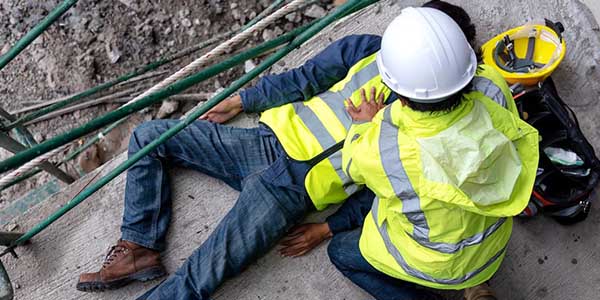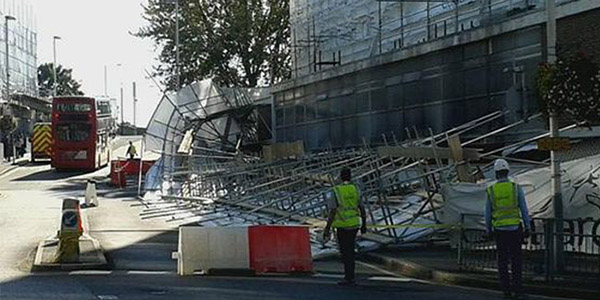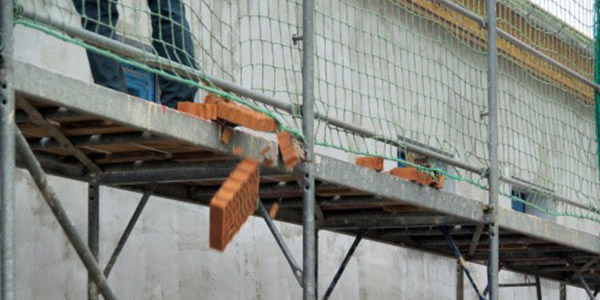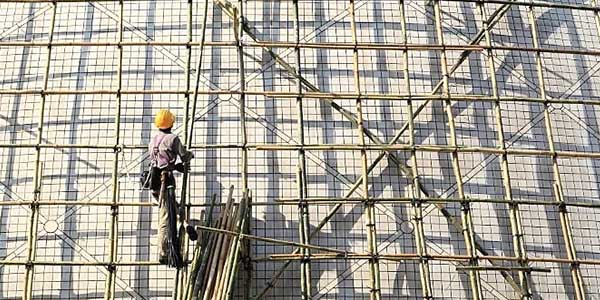Scaffolding is an indispensable aspect of many construction assignments, supplying access support to workers in currently inaccessible areas. With that being said, how is scaffolding dangerous? Scaffolding is, by all means, beneficial for safety and efficiency on the construction site, but it can pose potential threats to workers when used or maintained improperly. With this awareness of the hazards surrounding the construction environment, precautions can definitely reduce the risks of accidents and injuries.
Falls From Height constitute The Vast Majority of Scaffolding Accidents

Falls are the leading cause of death on construction sites. Scaffolding is a primary source of this risk. These falls can occur due to:
- Missing or improper guardrails: The toprail, midrail, and toeboards are critical for preventing workers from falling off the platform.
- Lack of personal fall arrest systems: When platforms are not fully planked or guardrails are not feasible, workers must use personal fall arrest systems (PFAS).
- Unstable or incomplete platforms: Gaps in planking, overloaded platforms, or shifting planks can lead to trips and falls.
Preventive Measures:
- Ensure guardrails, midrails, and kickboards are always attached and that a fall protection system exists.
- Ensure scaffolding is cupped on a solid and flat surface. Employ base plates or mud sills to sufficiently secure scaffolding in case of necessity.
- Workers are trained in scaffolding use and fall protection measures, along with proper and regular safety inspections and supervision.
Structural Failure Hazard: Scaffold Collapse

A complete or partial collapse of a scaffold is a nightmare scenario. It can be caused by:
- Improper assembly or disassembly: Failure to follow the manufacturer's instructions or the project’s specific design plans can compromise the scaffold's stability.
- Inadequate foundation: Scaffolding must be erected on a stable, level base. Soft ground, debris, or a lack of base plates can lead to a collapse.
- Overloading: Exceeding the maximum intended load can put immense stress on the structure, causing it to buckle or fail.
- Damage to components: Damaged frames, ties, or braces can weaken the entire system.
Preventive Measures:
- Follow the manufacturer's specifications and obey all rules and regulations concerning the scaffold assembly.
- Check the scaffolding before each shift, remove broken or worn parts. Give particular attention to connections, joints, and brackets.
- Avoid overloading the scaffolding. The load rating of the scaffold should be marked and conspicuously adhered to.
Falling Objects: Hazards from Tools and Materials

Failure to secure tools, materials, or debris, or having an inconsistent scaffold with unnecessary items, exposes those below to the risk of injury from falling materials from the scaffolding on them.
Preventive Measures:
- Tools, equipment, and materials should remain secured at all times when not in use.
- Ties or tool lanyards should be used to avoid dropping equipment. Debris nets or catch platforms can be installed below the scaffold so that any falling objects can be captured.
- PPE for ground workers will include hard hats.
Improper Scaffolding Use: Lack of Training and Awareness

Unskilled and uneducated laborers with little or no training in scaffolding take the next step to wildly misusing scaffolding on site, creating all kinds of unsafe situations starting from improper assembly, going through safety protocol violations, and completely disregarding proper scaffolding safety gear.
Preventive Measures:
- Make arrangements to provide proper training for all personnel engaged in the erection, movement, or use of scaffolding in the safe use of constructing scaffolding, awareness about potential hazards, and correct usage of fall protection.
- Help to make sure that the workers are reminded before starting work about safe scaffolding practices and awareness of hazards through safety briefings and refresher training.
Poor Scaffolding Maintenance: Wear and Tear Over Time
Exposure to open elements, usage, or some physical accident may lead to damage. The integrity of scaffolding always deteriorates if regular maintenance is ignored, and can lead conjuring up an accident.
Preventive Measures:
- Regularly inspect scaffolding, including the condition of planks, poles, couplers, and brackets. Any damaged part should be replaced right away.
- In the event of sudden extreme weather, scaffolding that must have been used outdoors should be cleaned and inspected properly after the severe weather to ensure it is still fit for use.
Inadequate Scaffold Access: Climbing Hazards

The PE workers climbing on scaffolding or going to the respective floors without access will lead to falls and injuries.
Preventive Measures:
- The employer has to provide safe and designated means for workers to access different levels in scaffolding, like ladders or stairs.
- SCaffolding frames or pipes must not be used for climbing by workers unless they are specifically designed for the provision of safe access.
Electrical Hazards: Contact with Wires
Scaffolding set up near electrical wires poses a deadly electrical threat. Scaffolding constructed too close to electrical wires or a lack of awareness about electrical safety would cause workers to, out of ignorance, contact wires and experience electric shocks.
Preventive Measures:
- Extend scaffolding a safe, considerable distance from overhead wires; normally at least 10 feet from wires.
- Use insulated tools and wear appropriate gloves when working close to any electrical hazards.
- Avoid using metallic scaffolding materials near electrical wires. In a case where metal scaffolding is used, alternate non-conductive materials are recommended or proper grounding for scaffolding must be ensured.
- Train workers in electrical safety, enabling them to recognize and safely avoid hazards.
Weather-Related Hazards
Rain, snow, or ice weather creates a risk of slipping and falling. Strong winds can make scaffolding unstable, posing a danger to workers and the scaffolding itself.
Preventive Measures:
- Use non-slip decking material to alleviate slips.
- Do not work on scaffolding in inclement weather, such as wind and rain.
- Fasten scaffolding in place and use ties or guy ropes to stabilize it in windy conditions.
- Clear snow or ice from platforms before commencing work.
Uneven or Weak Foundations
Scaffolding erected on uneven ground or soft soil may tilt, sink, or collapse, endangering workers and bystanders.
Preventive Measures:
- Place the scaffold on a solid base plate or mud sill to evenly distribute the weight.
- Assess the ground conditions to ensure it can support the weight of the scaffold and its load.
- Use adjustable outriggers to compensate for uneven surfaces and keep the platform level.
- Inspect the scaffold foundation regularly, especially after environmental changes such as rain.
Exposure to Hazardous Materials
Workers using scaffolding for tasks such as painting, welding, or cleaning may be exposed to hazardous materials such as paint fumes, dust, or chemicals.
Preventive Measures:
- Equip workers with masks, respirators, gloves, and goggles depending on the specific hazards they may face.
- Install fans or air filters to improve airflow and reduce the concentration of airborne particles.
- Use sensors to measure and control the presence of hazardous gases or particles in the work environment.
Scaffolding Removal Hazards
The removal process can be dangerous due to the risk of falling components, loss of scaffolding stability, or improper material handling.
Preventive Measures:
- Use a systematic approach to scaffolding removal, working from the top down.
- Train workers to ensure they understand the removal process and are aware of the risks involved.
- Workers wear gloves, helmets, safety belts, and special tools for demolition.
- Remove braces or ties to maintain scaffolding stability only when support is no longer required.
- Limit access to the area beneath the scaffolding to prevent injuries from falling components.
Conclusion
Though scaffolding involves several risks, it is something indispensable for building construction. With an appropriate understanding of the possible hazards surrounding scaffolding and the precautionary measures taken accordingly, incorporating regular training, inspections, and compliance with scaffolding safety regulations will continue to help reduce risks and protect someone working on the site. Remain vigilant, keep safe, and remember that in situations of working at height, safety always comes first.
FAQ
What are the regulations regarding scaffold height and stability?
- Scaffolds over 10 feet high require fall protection systems.
- The scaffold must have a height-to-base width ratio not exceeding 4:1 unless tied or braced.
What training is required for scaffolding use?
- Workers must be trained on proper scaffold setup, hazard identification, and fall protection systems.
- Training must also cover load limits and emergency procedures.
Are there specific guidelines for scaffold use in bad weather?
- Scaffolding work should stop during strong winds, heavy rain, or ice formation.
- Inspect scaffolding after weather events to ensure it remains safe for use.
Read More
8 Scaffolding Hazards to Consider ——Scaffolding Solutions
Scaffolding Hazard And Safety Practices—Canada Safety Training




